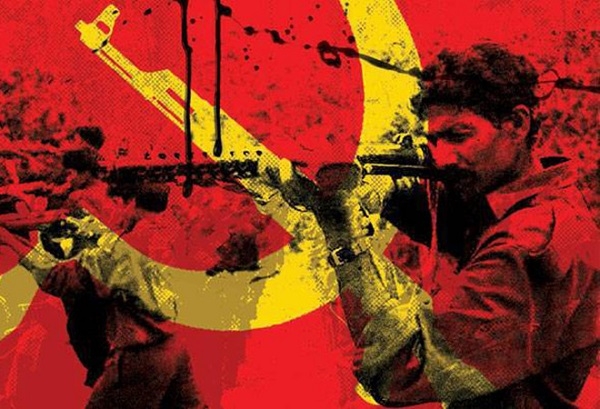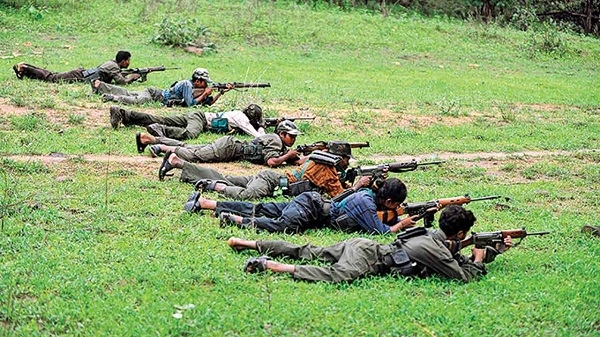How Urban Naxalites affect the democracy?
Total Views |
-Akanksha Aditi
What is Naxalism?
The term ‘Naxalism’ was originated in 1967 in Naxalbari, West Bengal when some rebellions made an organisation against local landlords who bashed labours over a land altercate. Charu Majumdar (Leader of Communist Party of India) leaded this violence.
That organisation adopted the Maoist ideology and later, many displaced tribes and other labour class people who were being exploited adopted the same ideology to fight against the system, thinking of initiating a revolution.
The movement started spreading in other states too which were fighting with poverty and corruption.
The largest supporters of this radical ideology were youth, especially the highly educated ones. And still, at the present time, many youths support this ideology.
According to a survey of the newspaper The Times of India, in Andhra Pradesh, 58% of the people support this ideology and 19% people are against it.

Naxalism in Urban Areas
Naxalism isn’t limited to forests and rural areas. Gone the days when the renegades were used live in rural areas and used to attack police and private company owners.
Are Naxalites present in Urban areas?
Yes. The people supporting this left radical communist ideology are present in urban areas.
Are they armed too?
No. They are not among the People’s Liberation Guerrilla Army cadres. They are the well- educated people; the intellectual ones. They may be a writer, a poet, film makers, an actor, a politician, students or a doctor.
‘Urban Naxalite’ commonly used jargon for ‘intellectuals’ supporting the idea of Marxism, separatism and communism. They are left leaned radical communists who want to end the capitalist economy and create a liberal stateless society.
In simple words, they work against the nation.
How Urban Naxalites affect the democracy?
India is a quasi-federal nation. It is neither completely a unitary state nor completely a Federal state. It lies somewhere between the two. According to the supreme court of India, India is a Federal structure with a strong bias toward the centre.
There are two houses- Rajya Sabha and Lok Sabha having members from different parties of the country. Each party have representatives of different region and community with different ideologies.
To demand an act, a procedure is laid out. In this procedure, an amendment bill is passed by each house of the parliament (The Rajya Sabha and The Lok Sabha). The bill is passed only when it gets the vote by the majority of members, that is, two-third of the members.

Rajya Sabha and Lok Sabha never sit together to pass any constitutional amendment bill. Parliament is very careful about the basic structure of the constitution hence; it can not let it altered without going under judicial review by the Supreme court.
Whenever a bill is passed or an act is imposed, it is due to the vote of majority of the people of the country. Hence, the democracy is preserved.
What if people of particular community want any act to be imposed? They too keep their demand peacefully in front of the supreme court and later, the supreme court decides whether to impose that act or not.
But these Rebels usually start violence other violent protests instead of following the law and maintaining social peace, hence, scathe the democracy of the country along with the economic loss.
Strategy
The Urban Naxalites work in an organised system. They usually try to make the contact with the youth directly, usually in a secret manner through any NGO or Camps later, they control the mass movement of the mobilisation against the government in the form of riot or protest.
In an investigation by Maharashtra Anti-Terrorism Squad, the arrested aggressors disclosed that they organised a 15-day camp in Pune and named it ‘teacher’s training programme’. The state operative of the Communist party of India Marxist, Milind Alias Jyoti Rao Alias Bada Deepak and his wife Rahi Alias Iskara (the secretary of CPI) taught lessons of Naxalism.
They target the people from rural areas and minor communities and discuss the social issues with them but instead of making any legit conclusion, they indoctrinate the Marxist ideology to the people.
In the Delhi riot that took place in North East Delhi between 2329th February 2020, there was a group amongst the protestors named ‘Pinjra Tod’. This group was organised to fight for women’s right issues but later it got itself involved in protest against revocation of Article 370, Jafrabad Riot and Shaheen Bagh Protest. Many innocents were killed and infants died in those riots.
Many urban Naxalites influence others through Literature, Films, Social Media etc. This tactic is commonly used at the present time because the youth are more leaned toward Social media and literature platforms.
In 2018, Varavara Rao, a left leaned writer, was arrested for the accusation of plotting to assassinate Prime Minister Narendra Modi. Along with him, Sudha Bharadwaj, a human right activist, was also booked for inciting violence in
Bhima Koregaon. Pune.
Activist Gautam Navlakha also surrendered himself before National Investigation Agency for his indulgence in Bhima Koregaon incident.
Naxalism is dangerous. But Urban Naxalism is much more dangerous than anything. It’s a cancer which provokes the youth of any nation to go against the nation.
(Akanksha Aditi is a BDS 3rd year student, pursuing course from MCDRC, Durg, Chhattisgarh. She is a micro influencer on social media and works as a social media activist and as a content creator. She has worked as a coordinator for NGO Youth Against Rape)

